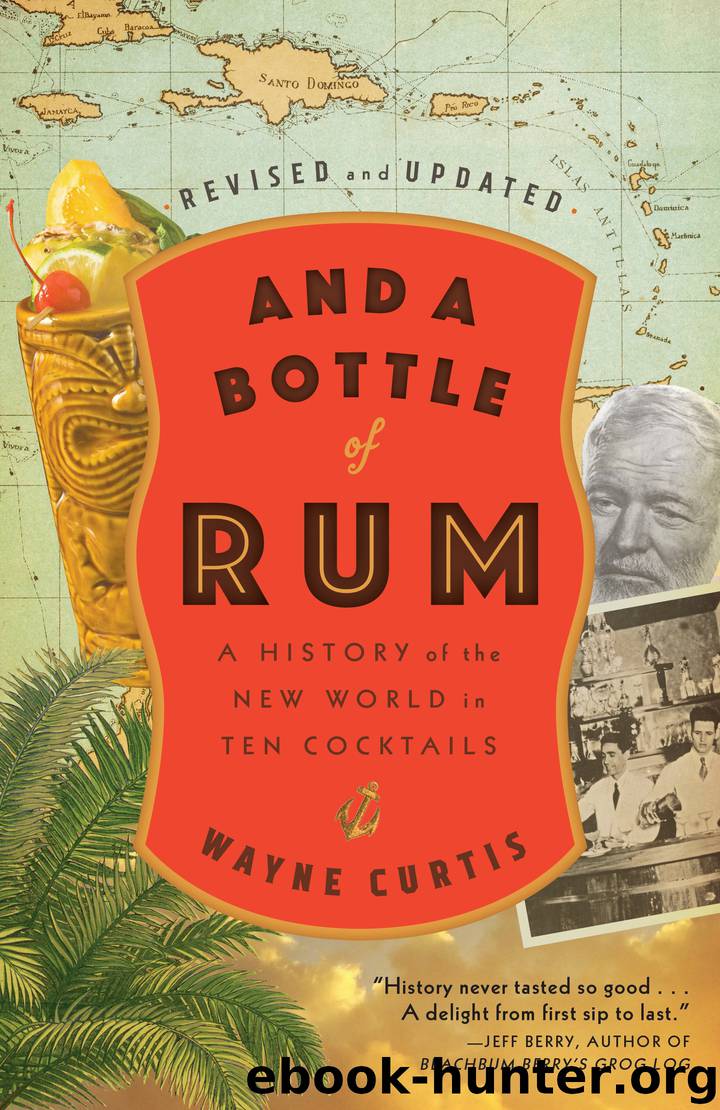And a Bottle of Rum, Revised and Updated by Wayne Curtis

Author:Wayne Curtis
Language: eng
Format: epub
Publisher: Crown/Archetype
Published: 2018-06-05T04:00:00+00:00
* * *
—
The temperance crusade was more of a guerrilla uprising than a traditional battle with a well-defined front. Scattered, far-flung groups went after the local and state liquor trade in isolated skirmishes; group leaders came together at conclaves and conventions to exchange ideas and beat the drums to maintain the fervor. The enemy was always out there, in kegs and bottles and tankards. Crusaders often railed against “intoxicating liquors” when among themselves, but that terminology was ungainly and lacked punch on pennants and posters and in podium-pounding speeches. “Ardent Spirits,” another favorite, seemed too genteel, and “King Alcohol” lacked absoluteness—alcohol, after all, was useful in industry and for medical reasons. The Drys needed a villain, one that had resonance, was memorable, and could command the attention of distracted crowds.
And so was born Demon Rum. The omnipresent liquor of the colonial era was now back, a symbol of everything odious that plagued the new republic, the windmill at which temperance crusaders would tilt.
By what curious process did rum come to exemplify the worst elements of liquor? In the 1830s, whiskey was by far the dominant drink. Why didn’t temperance leaders put whiskey squarely in their crosshairs? (To be fair, some tracts did go after whiskey, like the 1878 National Temperance Almanac, which asked, “What key will unlock the door to hell? Whis-key.”)
Whiskey was inconvenient in small ways, not the least that it was hard to rhyme. Yet anyone could find a rhyme for rum. In the 1900 presidential campaign, Republican supporters of William McKinley were given to chanting, “McKinley drinks soda water, Bryan drinks rum; McKinley is a gentleman, Bryan is a bum.” Rum was also pliable and could append itself nicely to other words. The mid-nineteenth century was the glory days for rum words: Rummy surfaced in 1834, rum-hole in 1836, rum-mill in 1849, and rum-dealer in 1860. Orators assailed the “rum interests” and made references to the “rum tax.”
Samuel Smith, a temperance poet, put this informal use of rum into more formal terms:
Hail, mighty rum! and by this general name
I call each species—whiskey, gin or brandy:
(The kinds are various—but th’ effect’s the same,
And so I choose a name that’s short and handy;
For reader, know it takes a deal of time
To make a crooked word lie smooth in rhyme…
Download
This site does not store any files on its server. We only index and link to content provided by other sites. Please contact the content providers to delete copyright contents if any and email us, we'll remove relevant links or contents immediately.
| Africa | Americas |
| Arctic & Antarctica | Asia |
| Australia & Oceania | Europe |
| Middle East | Russia |
| United States | World |
| Ancient Civilizations | Military |
| Historical Study & Educational Resources |
Cat's cradle by Kurt Vonnegut(15189)
Pimp by Iceberg Slim(14398)
4 3 2 1: A Novel by Paul Auster(12289)
Underground: A Human History of the Worlds Beneath Our Feet by Will Hunt(12027)
The Radium Girls by Kate Moore(11927)
Wiseguy by Nicholas Pileggi(5674)
Perfect Rhythm by Jae(5326)
American History Stories, Volume III (Yesterday's Classics) by Pratt Mara L(5257)
The Fire Next Time by James Baldwin(5250)
Paper Towns by Green John(5092)
Pale Blue Dot by Carl Sagan(4913)
A Higher Loyalty: Truth, Lies, and Leadership by James Comey(4847)
The Mayflower and the Pilgrims' New World by Nathaniel Philbrick(4428)
The Doomsday Machine by Daniel Ellsberg(4420)
Killers of the Flower Moon: The Osage Murders and the Birth of the FBI by David Grann(4387)
The Sympathizer by Viet Thanh Nguyen(4307)
Too Much and Not the Mood by Durga Chew-Bose(4276)
The Borden Murders by Sarah Miller(4249)
Sticky Fingers by Joe Hagan(4104)
